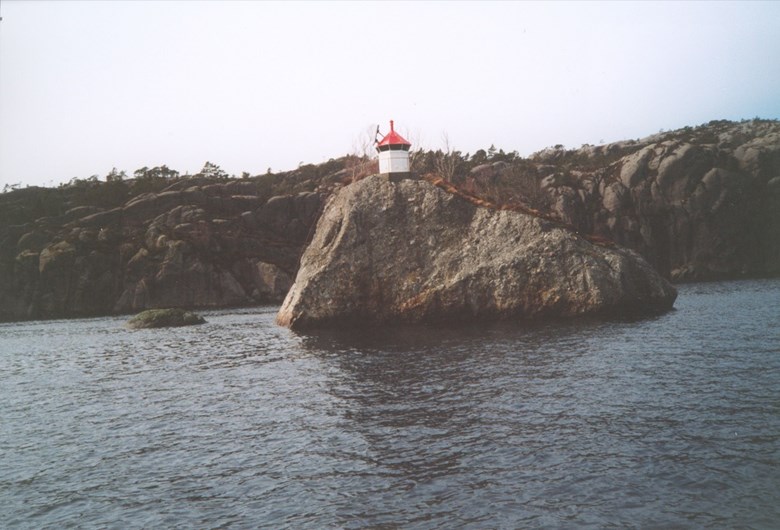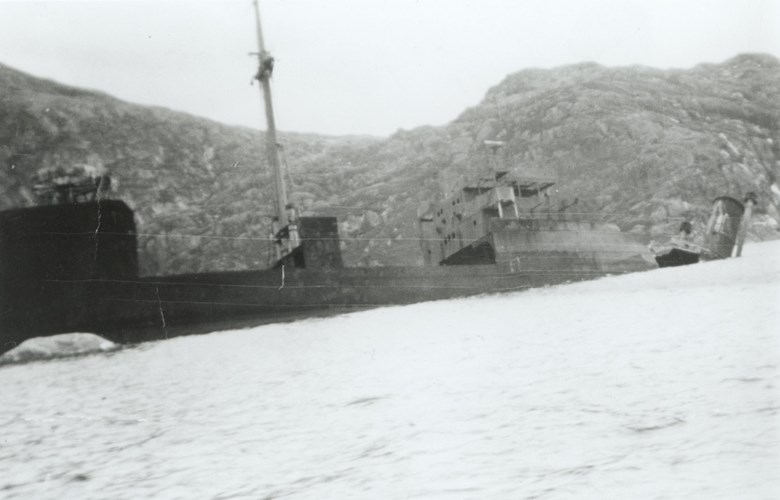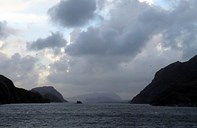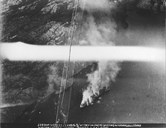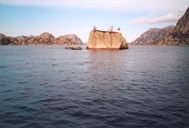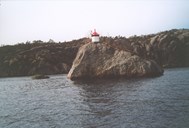Vindictive sea monster
In the autumn of 1944, the Germans had no operational fighter squadrons at Herdla. English planes could therefore operate more freely, and they sank several German vessels in the skerries. Consequently, German convoys sailed only at night, a policy which was paid for by even more groundings.
In the night 14-15 December, a German convoy headed across Sognesjøen toward Krakhellesundet. In the lead was the earlier Oslo-registered vessel S/S "Ferndale" of 4,300 tons, loaded with Polish potatoes. Captain Wagner was busy looking for land and paid no attention to the drift. The rock formation called "Seglsteinen", which points up like a vindictive sea monster, therefore took him by surprise, and the ship was grounded.
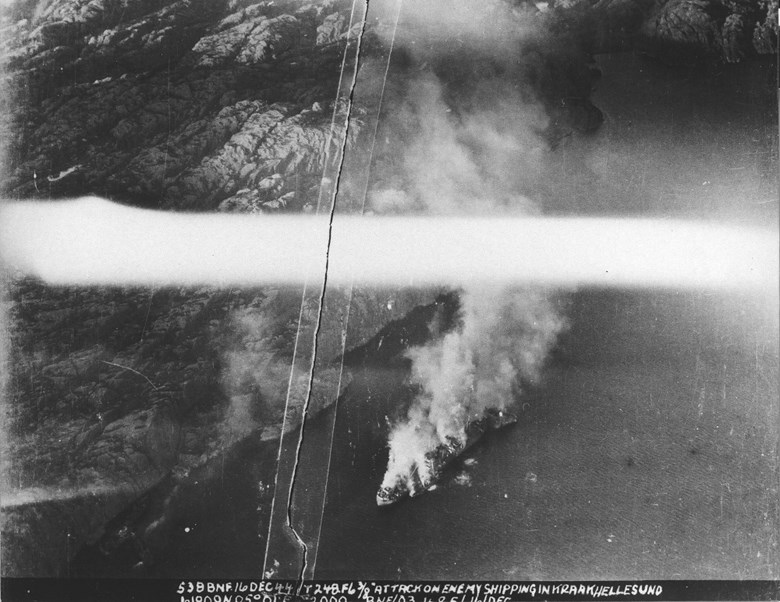
Mosquito planes at mast altitude
The next ships in the convoy barely made it past. The order was for the "Fairplay X" and the escort vessel "Jäger" to stay with the damaged ship and the others to go on north. A diver was needed, and the salvage vessel "Parat" was ordered to Krakhellesundet. The following day, the "Ferndale" was still stranded on the skerries when the captain observed planes. The alarm was sounded. The well-camouflaged "Jäger" sailed into the shadow of land on the west side and could not be seen by the planes. The "Fairplay X" was at sea, and the small "Parat" was tied to the "Ferndale". At top speed, 19 Mosquitoes arrived at mast altitude, spraying rockets and bullets from machine guns at the ships.
Inferno of fire and death
In 2-3 minutes the attack was over. The "Ferndale" and the "Parat" were in flames, the crew worked frantically to extinguish the fires, but ammunition exploded constantly. 45 minutes later, eight more planes arrived, the remainder of the fighter force from the Banff Strike Wing in Scotland, who had been sub-chasing near Fedje, and who now saw the smoke. New salvos hit the damaged ships, but one of the Mosquitoes was hit by the deadly "Jäger", and crashed into the rock at Losna. The Australian pilot with Norwegian roots, K. Beruldsen, and the English navigator O. Rabbit, died instantly. The "Parat" sank. The "Ferndale" broke in two, and one half went under. The stem remained as if it floated.
Fertile field
The German military forces left the shipwreck. As soon as the iron was cold, however, civilians took over. Much can be of use in a shipwreck, and the rumour about the great quantity of potatoes reached far and wide. Germans from the coast fortifications at Lammetun and Nesje arrived in the daytime. In the evenings, others came from east and west. Only the upper deck was accessible. After removing the scorched upper layer, they could pick potatoes into bags and cases. In the end, low temperatures stopped the potato harvest. The visible remains of the Ferndale were removed after the war.
